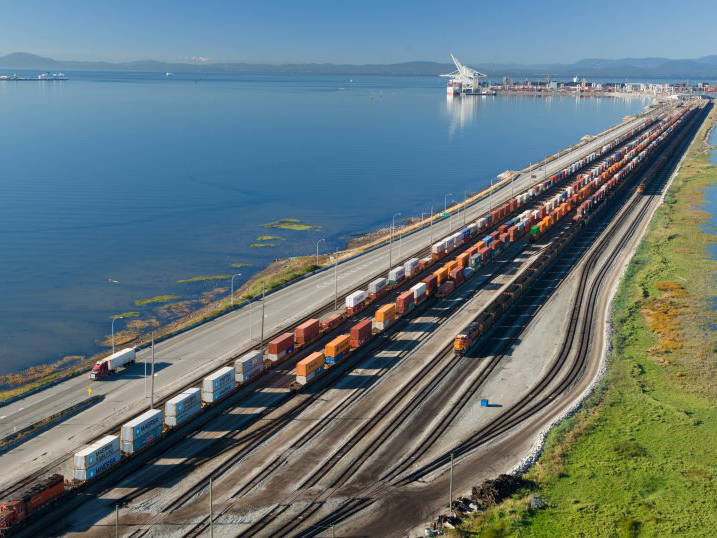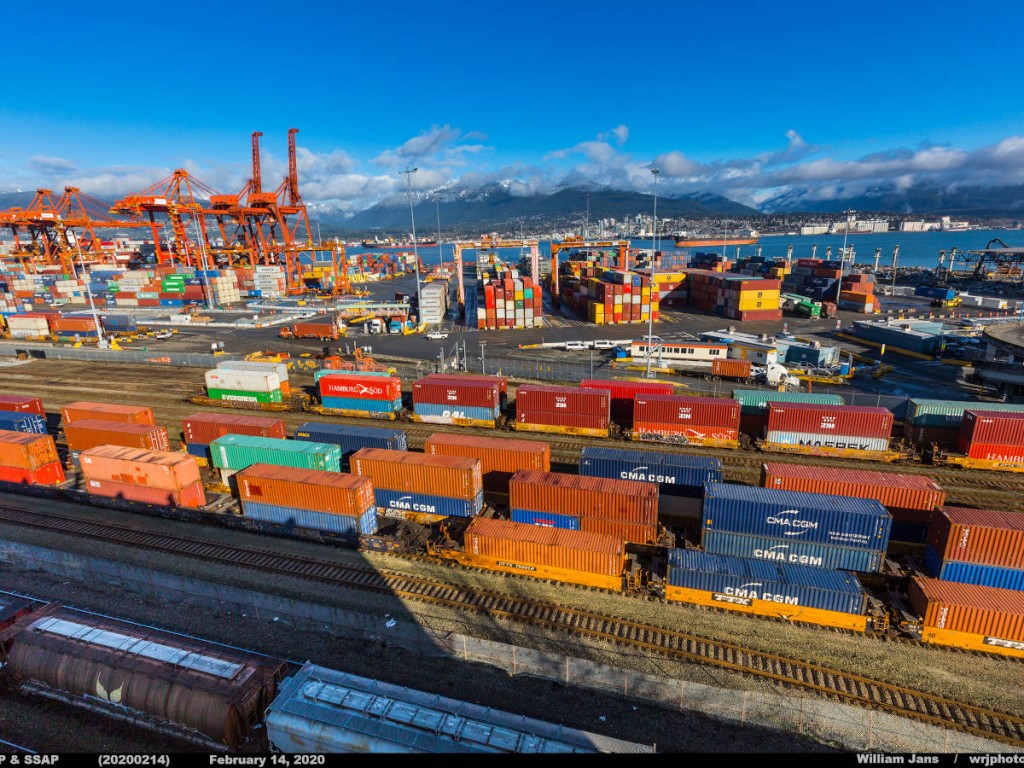American seaports are vital to the U.S. economy, providing a gateway to the global marketplace. Today, however, they are in need of critical infrastructure and technology improvements. Most pressing are their needs in upgrading and expanding their rail infrastructure and intermodal capacity. Canadian ports are already investing heavily in this area. The Canadian National Railway (CN), a class one freight railway, announced that it will invest approximately $445 million Canadian dollars in rail track infrastructure projects at the Port of Vancouver and the Port of Prince Rupert, among other projects.
Existing rail terminal operations at seaports are complex and capacity fluctuations create challenging operational scenarios. Disruptive events such as COVID-19 create additional volatility. To optimize their operations and increase intermodal rail capacity, progressive ports are turning to Artificial Intelligence (AI) based optimization software.

The American Association of Port Authorities (AAPA) reports that its members identified $20 billion in multimodal port and rail access needs through 2028. Rail access is associated with speedier vessel processing and is crucial to the multimodal movement of goods. Although 93% of ports have rail access, many ports’ on-dock and near-dock rail systems infrastructure and technology require updates. When asked in an AAPA survey how much more throughput capacity could be added to their ports with improved rail access, 42.86% responded they expected capacity gains of more than 25%.
Last year, AAPA reported cargo activities at U.S. ports alone were responsible for $5.4 trillion in annual economic activity, supporting 30.8 million jobs and providing $378.1 billion in tax revenue to federal, state, and local governments. According to AAPA President and CEO Christopher J. Conner, “The economic downturn this year has caused significant economic damage to our ports, with an estimated decline of 20% to 30% of their total annual receipts.”
Although the port sector has been one of the hardest hit by COVID-19 disruptions to the supply chain, it largely continues to operate without interruption. Pre-pandemic efforts to digitize work processes can partially be credited for this performance. Still, the pandemic has shown the need for real-time optimization of terminal work processes.
Prior to the pandemic, the rise in ultra-large container ship traffic placed considerable strains on port infrastructure and operators’ ability to expediently process growing cargo volumes. The first two quarters of 2020 marked a continued increase in these ship arrivals, creating congestion peaks and overwhelming landside and yard operations. This resulted in multi-day cargo clearing delays and lost cargo movements. To increase container handling and intermodal loading efficiencies, as well as enhance their existing Terminal Operating Systems’ (TOS) capabilities, proactive terminal operators are turning to agile optimization software. One example is DP World Vancouver. It plans to increase its handling capacity at its Centerm container terminal by nearly 65% to 1.5 million TEU, while only increasing the terminal’s footprint by 15%. Centerm has been reconfigured and has undergone various road work projects. Its intermodal rail facilities also were expanded and modernized. A key component of the project was the real-time optimization of yard operations. AI-based optimization software helps improve intermodal yard operations, while maximizing productivity and reducing the need for future infrastructure investments.
Terminal Operating Systems
Today’s multimodal terminal operations are complex and have many components. By applying a TOS to gather data, more efficient management of assets, labor and work processes can be achieved. However, larger terminals and increasing container volumes, coupled with heightened volatility and uncertainty, demand improved ad-hoc decision making. Optimization software, powered by AI and Operations Research (OR) based algorithms, has proven to significantly improve the capabilities of existing TOSs. Concurrently, yard, crane, and vehicle utilization, as well as train load planning and real-time train load adjustments are significantly enhanced.

Optimizers for Rail Operations
Among the most valuable tools in the software suite for ports and terminals are train load optimizers, rail schedulers and vehicle optimizers. Each has an important role in the port and terminal process. Train load optimizers select the rail containers considered for train stowage to reduce yard work, maximize rail area productivity, and cater to double stacking, while ensuring compliance. They create optimized train load plans, making real-time adjustments to reflect new containers becoming available, and previously planned containers not being available now or determined unsuitable for loading. Consideration is given to loading restrictions such as weight restrictions, dangerous goods, stacking constraints, etc. To fulfill individual KPIs and support on-time departures, all planning criteria can be customized. Additionally, the solution provides an optimized allocation for outgoing train containers, which is updated as needed after loading begins.
Rail schedulers serve to optimize the train loading/unloading processes between yard blocks and rail tracks and back again. This is accomplished by real-time adjustments to crane schedules reflecting job progress and the crane’s position to reduce travel distances and increase container handling efficiency. They further enhance crane productivity as the optimizer suggests double-cycling when possible thereby creating a positive flow relating to handovers and equipment transfers. Terminals operating multiple cranes simultaneously benefit from the optimizer’s ability to split cranes and dynamically assign resources to avoid handling bottlenecks. The workload is adjusted automatically for planned breaks, maintenance and workflow disruptions. The rail scheduler prioritizes all loading movements to promote on-time performance. Another key optimization module is the vehicle optimizer. It provides real-time matching of each transport order with the most suitable vehicle (i.e., straddle carrier, reach stacker, AGV, tractor, etc.). It creates multiple transport chains thereby reducing waiting times, empty vehicles and vehicle idle times.
The use of AI based optimization software facilitates terminal-wide automated decision-making which, in turn, helps container terminal operators increase efficiencies and improve overall productivity and asset management. A McKinsey study showed that progressive ports with a high degree of automation can reduce operating costs by 25% to 55%, while increasing productivity by 10% to 35%. Agile optimization software is an integral part of a port’s modernization strategy. Easy and quick to integrate with any existing TOS, it is a cost-efficient way to further enhance work processes and maximize the use of existing equipment, offsetting the need for additional equipment purchases. With these tools in place, ports can adapt quickly to any intermodal challenges, keeping the supply chain flowing.
Closing Remarks
The AAPA is urging the U.S. government to pass legislation allowing for $1.5 billion in direct grants to help U.S. ports cover operations, equipment, and infrastructure costs, and debt service expenses. “We’re optimistic that this modest federal assistance, should it be appropriated, will ensure that U.S. ports will be able to maintain a state of readiness so they can significantly aid in the nation’s eventual economic recovery,” says Conner.


